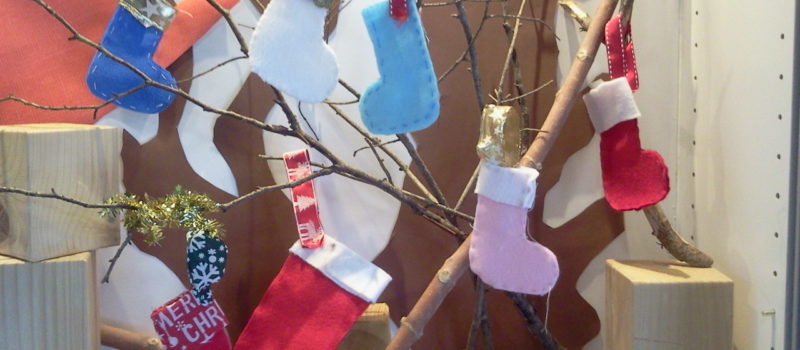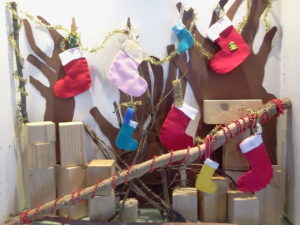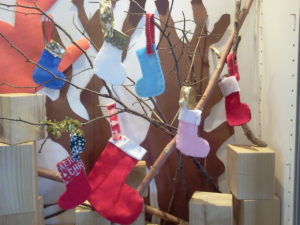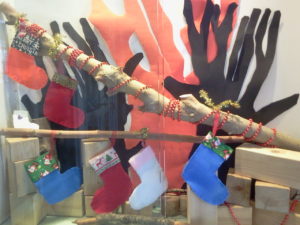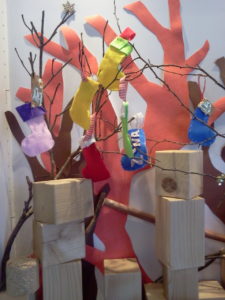Am 6. Dezember ist Nikolaus. Das heißt: Schuhe bzw. Stiefel vor die Tür stellen und warten, dass der Nikolaus sie über Nacht befüllt. Doch wann muss man seine Stiefel eigentlich rausstellen?
Die Antwort lautet: Am Abend des 5. Dezember stellen die Kinder ihre Stiefel vor die Haustür. Der Nikolaus kommt nicht mehr am selben Abend, sondern über Nacht. Am nächsten Morgen – wenn die Kinder ihre Stiefel fleißig geputzt haben – finden sie darin Süßigkeiten und kleine Geschenke. Der Nikolaus ist von Haus zu Haus gegangen und hat sie ihnen in die Stiefel gesteckt. Manche (Eltern) stellen neben die Stiefel zudem einen Teller mit Plätzchen – die sind für den Nikolaus, der für seine Arbeit entlohnt werden soll. Am nächsten Morgen ist der Teller dann leergegessen. (aus: https://www.stern.de/familie/wann-stellt-man-den-nikolaus-stiefel-raus–wer-ist-knecht-ruprecht–7775146.html)
A Christmas stocking is an empty sock or sock-shaped bag that is hung on Saint Nicholas Day or Christmas Eve so that Saint Nicholas (or the related figures of Santa Claus and Father Christmas) can fill it with small toys, candy, fruit, coins or other small gifts when he arrives. These small items are often referred to as stocking stuffers or stocking fillers. The tradition of the Christmas stocking is thought to originate from the life of Saint Nicholas. In some Christmas stories, the contents of the Christmas stocking are the only toys the child receives at Christmas from Santa Claus; in other stories (and in tradition), some presents are also wrapped up in wrapping paper and placed under the Christmas tree. Tradition in Western culture threatens that a child who behaves badly during the year will receive only a piece or pile of coal.[1] Some people even put their Christmas stocking by their bedposts so Santa Claus can fill it by the bed while they sleep.( https://en.wikipedia.org/wiki/Christmas_stocking)
La Befana, corruzione lessicale di Epifania (dal greco ἐπιφάνεια, epifáneia) attraverso bifanìa e befanìa, è una figura folcloristica legata alle festività natalizie, tipica di alcune regioni italiane e diffusasi poi in tutta la penisola italiana, meno conosciuta nel resto del mondo. Secondo la tradizione, si tratta di una donna molto anziana che vola su una logora scopa, per fare visita ai bambini nella notte tra il 5 e il 6 gennaio (la notte dell‘Epifania) e riempire le calze lasciate da essi, appositamente appese sul camino o vicino a una finestra; generalmente, i bambini che durante l’anno si sono comportati bene riceveranno dolciumi, caramelle, frutta secca o piccoli giocattoli. Al contrario, coloro che si sono comportati male troveranno le calze riempite con del carbone o dell‘aglio.
( https://it.wikipedia.org/wiki/Befana)
 De
De en
en fr
fr

